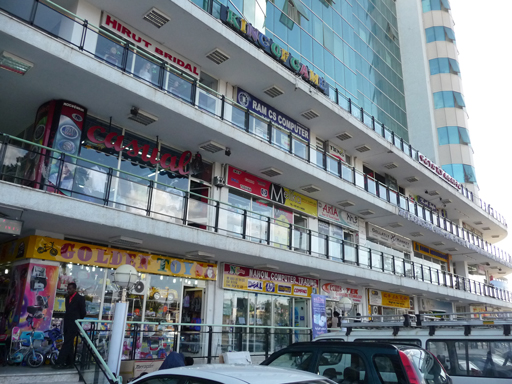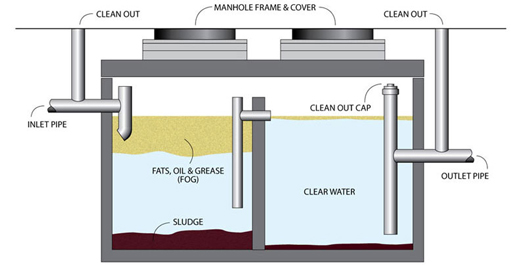4.1.2 Liquid wastes from commercial areas
The wastewaters from commercial areas (Figure 4.2) – comprising business establishments, shops, open market places, restaurants and cafes – will mostly resemble those from households. This is because only human-related activities are undertaken in such areas, as opposed to other activities such as industrial production. Effluent from restaurants and cafes may contain high levels of oil from cooking processes but this can be overcome by using a grease trap (Figure 4.3) in their outlet pipes. A grease trap consists of a small tank or chamber which slows the speed of effluent flow. In the grease trap, fats, oils and grease float to the top of the wastewater and form a layer of scum that is contained within the tank. This can then be removed and disposed of as solid waste. Relatively clean water exits from the grease trap for disposal.


The quantity of wastewater generated per person in a commercial area will be less than it would be at home because the only time spent there is during the working day, and so activities such as bathing are not usually undertaken at these establishments.
4.1.1 Liquid wastes from residential areas
